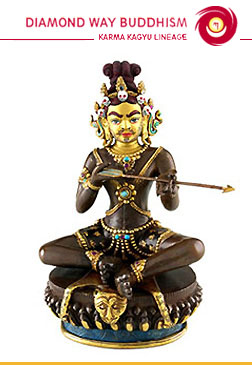 |
|||
|
|||
 |
|
Iohanne-Yurgen Blomeer was born in Japan in 1912. His father collected Buddha statues which impressed young Iohanne's imagination. Having graduated from the Law department of Jene University and after the 2nd World War, Iohanne-Yurgen Blomeer studied Hindi and Sanskrit in Bonne. In 1951 he became a diplomat and used to go London, New Zealand, Washington and Egypt. Since 1960 he systematically collected statues and ritual objects and after his retirement gathered many important statues of all Buddhist traditions. He died in the age of 88 in December 2000. His son Gerald R. Blomeer and his daughter Kerin Stolly inherited the collection and showed it to the public for the first time. The exhibits belong to different epochs and styles. The most ancient one, an Indian Buddha statue dates back to Gandhara's time (1-3 centuries AD). Hevajra statue goes back to Cambodian Angkor period (12-13 centuries) and the Medicine Buddha - to the Indian dynasty of Pala dating back to the early Middle Ages period (14th century). There are some 300-year-old statues from Nepal and Tibet, mainly in beri style which was formed under the influence of India and Nepal. Most of the exhibits were made in Tibet in the end of 19th and the beginning of 20th century. 200- year-old ritual objects were made of precious metals in 18-19th centuries. Among them are a diamond skip (vajra in Sanskrit, dorje in Tibetan), bells, cutting knives, skull cups and ritual knives (kila in Sansk., phurba in Tib.) made partly of crystal or gold, decorated with precious stones and paintings. © © Russian Buddhist Association of the Karma Kagyu school 2009 |


|

|

|